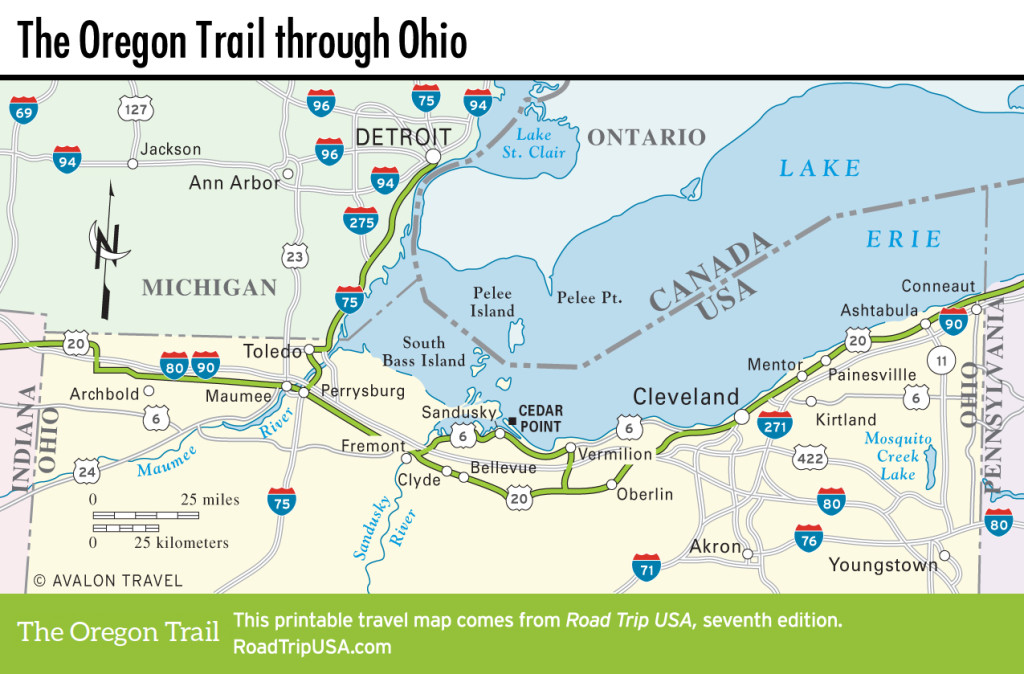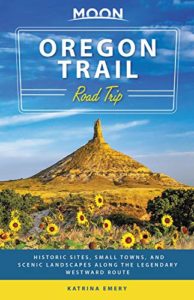Maumee to Clyde
Maumee and Perrysburg
South of Toledo along the Maumee River, a pair of towns preserve important parts of western Ohio’s early history. On the west bank of the river, Maumee (pop. 13,722, pronounced “MAH-mee”) was founded in 1817 at the western edge of settled territory and holds remnants of the Miami and Erie Canal.
Across the river, Perrysburg (pop. 21,592) is a pretty little town of white colonial-style houses, with a nice waterfront park and a short strip of restaurants and bars running east along Louisiana Avenue. A mile upstream from town, Fort Meigs (419/874-4121 or 800/283-8916, Wed.-Sun. summer, Fri.- Sun. winter, $5-10) is a full-scale reconstruction of the wooden fortress that played a key role in defending the frontier against British and Native American attacks during the War of 1812.
Fremont
In Fremont (pop. 16,034), where indigenous Wyandot people established a village along the main trail between Pittsburgh and Detroit in the 1700s, the main attraction is the Rutherford B. Hayes Presidential Center (Spiegel Grove., 419/332-2081, Tues.-Sun. Jan.-Mar., $20), southwest of US-20, which encompasses the 25-acre estate of Civil War general and former U.S. president Rutherford B. Hayes, who lived here 1873-1893 and served as president 1877-1881. The nation’s first presidential library, the Hayes center includes the rather plain redbrick family house and a large museum displaying his public and private papers, sundry mementos, and his daughter Fanny’s dollhouse collection. Hayes is buried on a wooded knoll on the grounds, alongside his wife and their favorite horses.
Clyde
Eight miles east of Fremont, the town of Clyde (pop. 6,174) is a perfect little place, still the typical farm town that the New Deal-era WPA Guide to Ohio said might well have served as a model for one of Thomas Hart Benton’s murals of rural America: “Old Indian paths and sand ridges are now angular streets; cheek by jowl with an odd assortment of business houses is the railroad cutting across Main Street, gyved with station, elevator, and spur track; around the decorous houses are gardens, flowerbeds, and shrubbery tended by friendly and loquacious folk.”
Clyde’s brick-paved streets are still quiet, lined by mature trees and most of the same houses as when writer Sherwood Anderson, who was born in southern Ohio in 1876, grew up here in the 1880s and 1890s. Because the people of Clyde took offense at Anderson’s sharply drawn and only slightly disguised portraits of them in his groundbreaking book, Winesburg, Ohio—which was published in 1919, 20 years after Anderson left Clyde for Chicago—the town doesn’t celebrate him in any obvious way. The only real sign of Anderson is in the local library (222 W. Buckeye St., 419/547-7174, Mon.-Sat.), a block west of the town center, where visitors can examine a collection of his books and a short documentary video of his life and times. The library is also the best place to pick up the pamphlet that points out Anderson’s home and the sites of many scenes from Winesburg.
Besides the Winesburg legacy, Clyde also offers one very good road-food stop: the photogenic Lulu’s Twistee Treat (419/547-6996, daily), shaped like an ice-cream cone.
Related Travel Guides
Ohio Travel Map

















